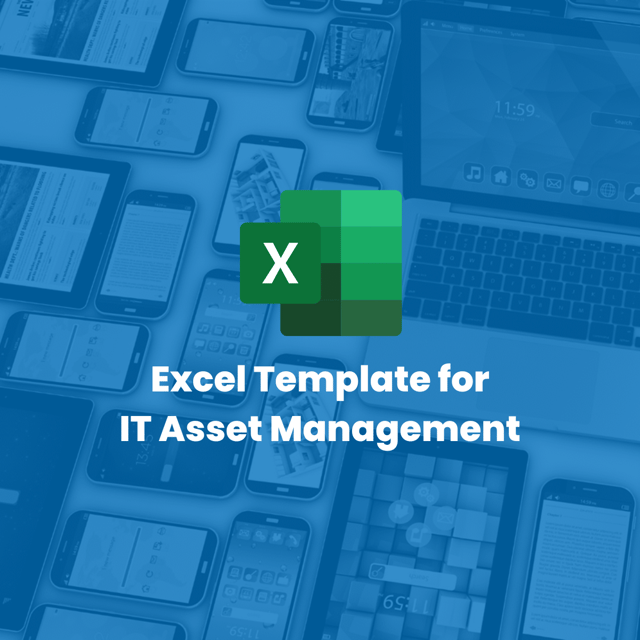You can enter your email in the form below to download our IT Asset Management Template:
This page is focused on IT Asset Management of physical IT assets in Excel. Goodly Cloud is the best way to manage your IT assets. However, to get you started on the right path, we have created an Excel template you and your team can use to manage physical IT assets in a simple Excel sheet. On this page, you will find a list of columns that you should include in your Excel to manage your mobile IT assets.
Assigned ID / Label
This is typically a property that is unique for each asset but that is assigned by each organization. Its use comes from the use of "barcodes" that were originally "pre-printed" and had to be associated to each asset. Some organizations still to this. In some cases, this unique ID is associated to a QR code or ever RFID tag as opposed to a more traditional barcode label.
Serial Number
A serial number is a unique identifier assigned to the asset by the manufacturer.
IMEI
The IMEI is a unique identifier for mobile devices that have an internal model for 3G, LTE or 5G cellular connections. IMEI stands for "International Mobile Equipment Identity".
Service Tag or ID
A service tag is a code used to identify IT assets such as computers, printers, and software. The code is typically assigned by the manufacturer and is then used by the IT department to track the asset throughout its lifecycle. Service tags can be helpful in a variety of situations, such as when an asset needs to be repaired or replaced. In addition, service tags can be used to generate reports on the utilization of IT assets. As a result, service tags can play a key role in managing IT assets.
Asset Type / Category
There are many distinct types of devices, but three of the most common are laptops, tablets, and smart phones. All three of these asset types have their own unique benefits and drawbacks. Categorizing assets and devices is important since IT teams may follow different processes when supporting different asset types.
Model Number
The model number of a laptop or smart phone can be found in a number of places, depending on the make and model of the device. For laptops, the model number is usually located on the bottom of the device, near the hinge. For smart phones, the model number is usually located on the back of the device, near the camera. In some cases, the model number may also be printed on the packaging that the device came in. Knowing the model number of your laptop or smart phone can be helpful if you need to order replacement parts or troubleshoot problems with the device.
Manufacturer
The manufacturer is the company that design and makes the device, for example brands such as Samsung and Apple are device manufacturers.
Vendor
IT equipment for businesses and enterprises is often procured through vendors. These vendors often become the business' main point of contact to process returns or to purchase accessories or service contracts related to this equipment.
Location
Traditionally, the physical location was extremely important for IT teams. This is evolving due to the shift to hybrid workspaces.
User Assignment
User assignment is extremely important for IT managers. User assignment is used along with location assignment to keep track of physical IT assets.
Purchase Date
The purchase date is normally the date at which an order is placed. This can be when payment is made or when a PO is issued depending on the size of the organization tracking its assets.
Received Date
This is the date on which the purchased assets were received. This date is helpful to track warranty start dates and to make sure returns (for example DOA's, Dead on Arrival) are processed within the allowed timeframe.
Deployment Date
This is the date an asset is assigned to a user or location. In the case of remote users, it is the day the device or kit is shipped.
Warranty Expiration
Warranty expiration dated is normally a number of months or years added to the "Purchase Date" or "Received Date".
Purchase Price
The purchase price of the assets is normally tracked from the moment a purchase is made or a PO is issued. It is important to standardize how this information is tracked. For example, should accessories and/or warranty costs be included? This is a decision that each organization needs to make but which is normally influence by the reason this information is tracked. For example, IT or finance may want to measure an asset's total cost of ownership over its lifecycle, or it may simply want to use reference the past purchase prices when making future purchases.
Custom Field 1, Custom Field 2, Custom Field 3
Custom fields may vary based on asset type and could include elements such as:
- Warranty Duration
- Support Link, Support Email or Support Number
- PO or finance reference number
- Mobility information such as SIM or phone number
Additional Information
IT teams traditionally have an open text field for each asset to track notes or comments. Over time this field tends to become convoluted but the first step in establishing a proper asset management strategy is to record information about your organization's assets.

